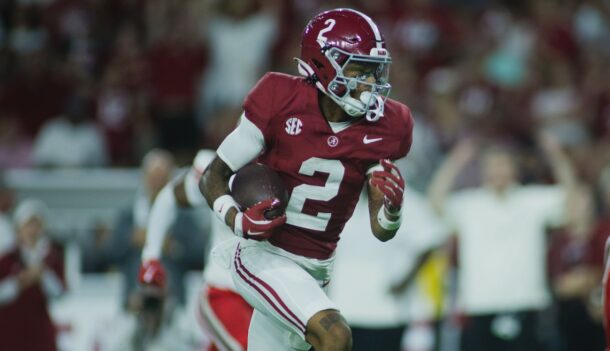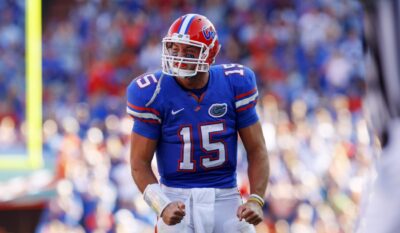Vaught-Hemingway Stadium leading way for in-game concussion detection
By Ethan Levine
Published:
This fall, Vaught-Hemingway Stadium — home to the Ole Miss Rebels — will debut new technology that will make detecting a concussion during a game easier than ever, hopefully ushering in the dawn of a safer age of SEC football.
The technology begins with an “X Patch,” engineered by X2 Biosystems, placed behind the ear or in the mouthpiece of each player’s helmet. That patch can sense the angle at which a player’s head is struck, as well as measure the rotational force from the hit delivered. That data is all sent almost instantaneously to one of eight remote, wireless spots throughout the stadium to give team medical staffs a better means by which to diagnose and treat a player who suffers a blow to the head during a game.
Similar patches are already used in the NFL as well as in soccer and in hockey, and as Ole Miss assistant engineering professor David Morrison told the Jackson Clarion-Ledger, the added information provided by the “X Patch” can help teams determine the severity of a hit and the necessary medical response.
“Basically there’s no thumbs up or thumbs down assessment tool that says whether or not someone has a concussion, but this gives them the information to have a rapid and accurate assessment and help them decide how quickly they can return the athlete to play,” Morrison said.
Previous concussion detection technology could tell doctors and training staffs of the severity of a concussion as well as cognitive skills effected, but that technology could not record force applied in a hit to the head or the quantity of hits resulting in a particular concussion. The new technology can also correlate to game film to help indicate if a player needs to improve his form when tackling, and it can sense when blows to the head are not caused by player-on-player collisions, such as awkward falls to the ground.
So not only does the new technology inside Vaught-Hemingway Stadium relay concussion information faster than ever before, but it also goes more in-depth than ever before, helping doctors learn the causes of many of these concussions and not just the severity of them.
“How much force is needed and how many repetitions does it take?” Shannon Singletary, the Senior Associate Athletic Director for Health and Sports Performance at Ole Miss, told the Clarion-Ledger. “What this new sensor tells us is both of those. It tells us exactly where the head is taking the impact, the exact number of hits during the practice or competition that the athlete has received, and the amount of force with which they’re hit.”
The new “X Patch” technology should make its introduction inside Vaught-Hemingway Stadium when the Rebels’ football season kicks off this fall. As Singletary told the C-L, that will mark a momentous time for player safety at Ole Miss and in the FBS, more specifically the SEC.
“Across the NCAA there’s a huge emphasis on the well-being of your athletes,” she said. “At Ole Miss, we’re not just giving lip service, we’re investing hugely in the resources it takes to insure that.”
A former newspaper reporter who has roamed the southeastern United States for years covering football and eating way too many barbecue ribs, if there is such a thing.







